Sonos Play:3 vs. Bose SoundTouch 20: Which should you get?
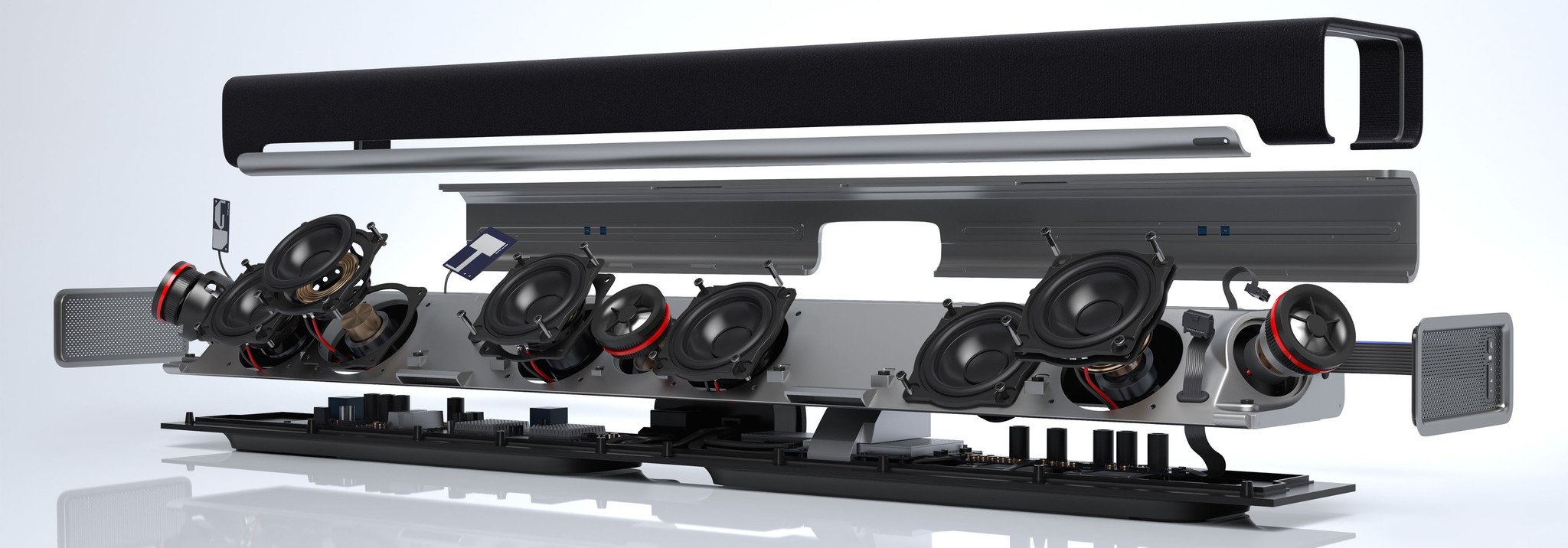
If you're shopping for a whole-home audio system and you're between Sonos and Bose this means two things: you really care about premium audio quality and you're ready to spend some money to get it.
Both systems connect beautifully for multi-room audio and support major audio streaming services. They're both easy to expand by adding additional speakers as you grow your system. And both have excellent app integration to control your listening experience from your device or computer.
If you're building your first whole-home music system, you'll likely want to start with a few standalone speakers and build up from there. Eventually you may want to integrate a Bose or Sonos home theatre setup to your audio system, but you can get started by connecting individual speakers in different rooms of your house.
If you are looking for exceptional sound quality in a large space, then consider stepping up to the mid-size offerings from Sonos and Bose, the Sonos Play:3 and the SoundTouch 20.
Sonos Play:3 vs. Bose SoundTouch 20
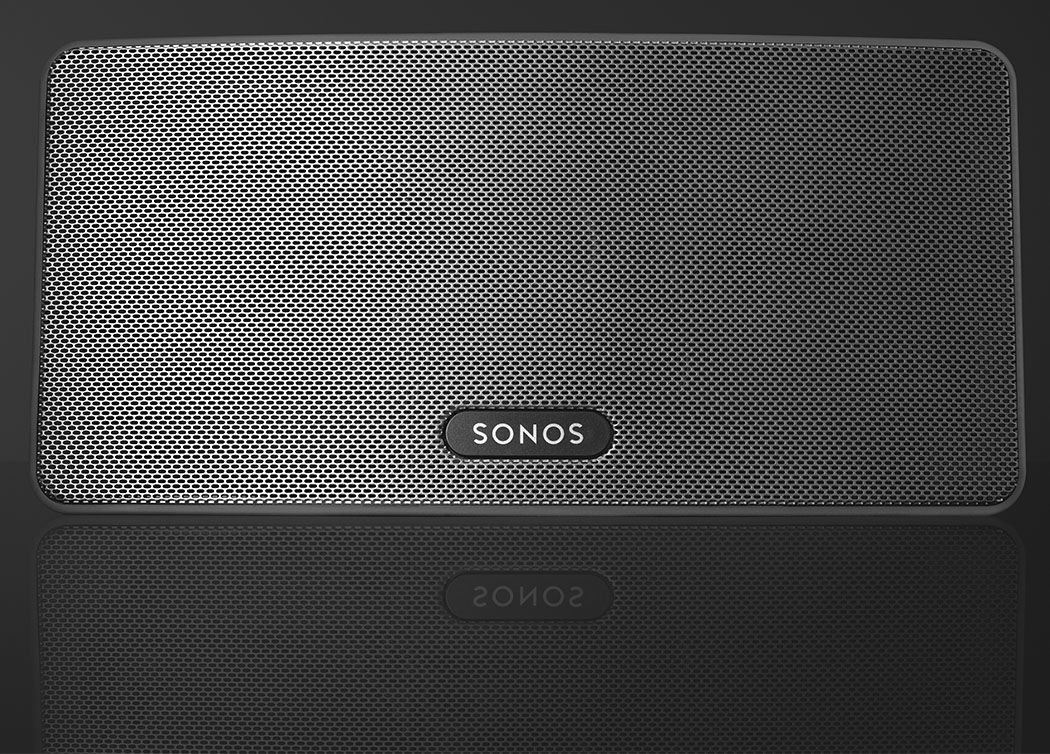
The Sonos Play:3 was designed to flood an entire room with clean, quality audio. The Play:3 is a big step up from its smaller sibling, the Sonos Play:1 thanks to its comprehensive speaker system. Three speaker drivers powered by dedicated, class D digital amplifiers (known for big sound in a small package) power sonic bliss through one tweeter and two mid-range drivers. The Play:3's bass radiator rounds out the frequencies of this powerful unit with deep and powerful tones.
Buttons on the top of the speaker allow you to control the volume and playback of content streaming through your Play:3. On the back you'll find an ethernet port. While none of the Sonos speakers support AirPlay, by connecting an Airport Express through the Play:3's ethernet port, you will be able to AirPlay music from your iOS devices.
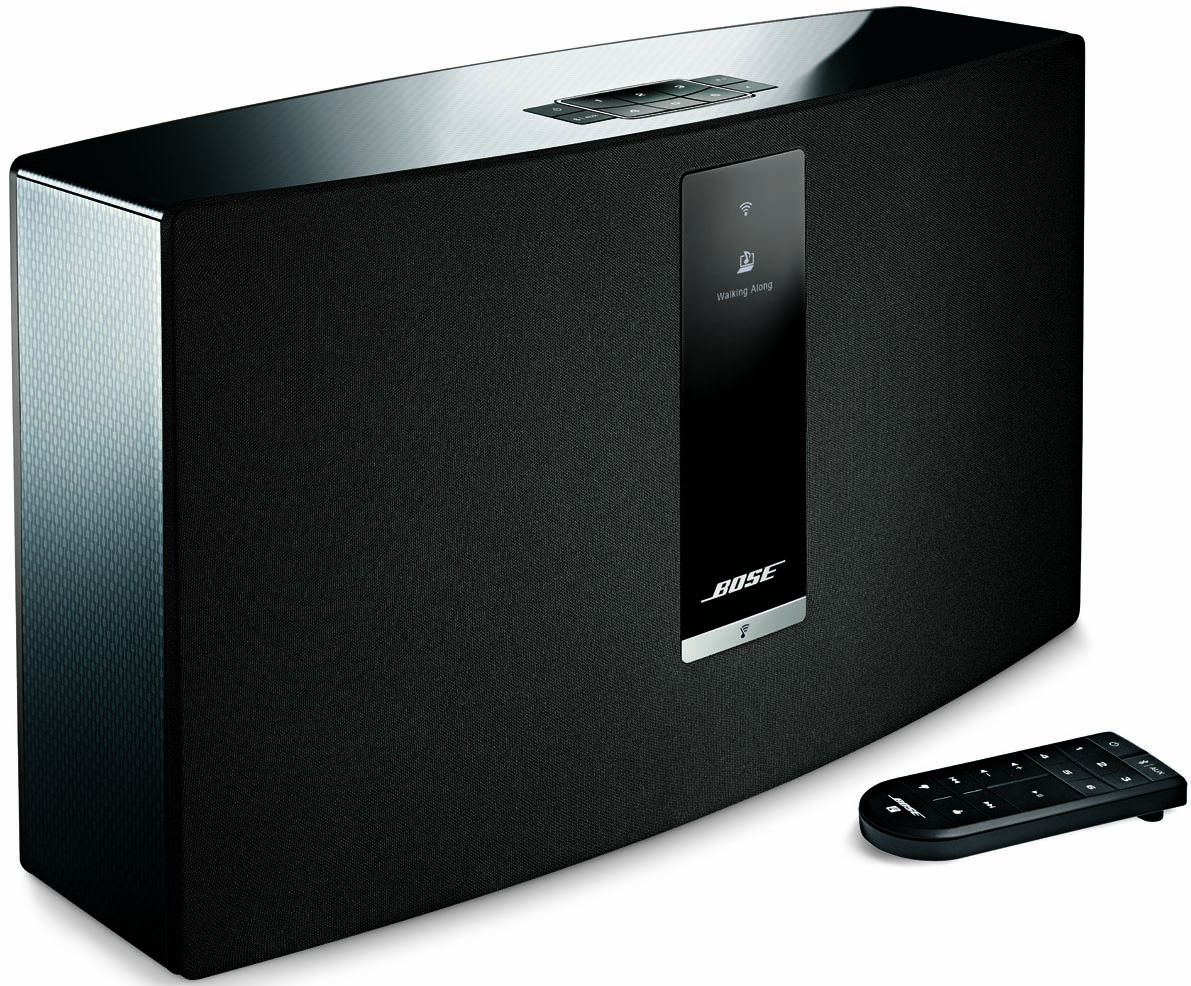
The Bose SoundTouch 20 adds additional features over the entry-level SoundTouch 10 while still offering exceptional, room-filling, audio. The design of the SoundTouch 20's speaker casing naturally produces punchy bass balanced through the high and midrange frequencies pushing through the SoundTouch's transducers. This means you end up hearing clean bass and warm high and mid-range frequencies.
Master your iPhone in minutes
iMore offers spot-on advice and guidance from our team of experts, with decades of Apple device experience to lean on. Learn more with iMore!
In addition to the preset and playback buttons on top of the speaker, the SoundTouch introduces an OLED display. This screen provides detailed information about the song, artist, and station you are streaming as well as connectivity information. It's not an essential feature, but it can be nice to see extra detail if you're away from your streaming device. Keep in mind, once those pre-set buttons on the top of the speaker are programmed to internet radio stations using the SoundTouch app, you can listen to those stations with the touch of a button, even without a connected device.
On the back of the speaker, you'll find an ethernet port allowing you to add an AirPort Express for AirDrop compatibility or to plug directly into a router or ethernet port if you're setting up the speaker in a part of your home with weak Wi-Fi. Like other products in the Bose family, the SoundTouch 20 comes with a remote control with a 20-foot range.
Connectivity
Both the Sonos and Bose SoundTouch speakers allow you to send music wirelessly, though they work a little differently.
When you set up your first Sonos speaker, it will use your home's Wi-Fi to create its own, dedicated wireless network called SonosNet. This wireless system exists outside of your home's Wi-Fi and is the primary method your Sonos system will use to communicate with other speakers in the system and to stream music. SonosNet will reduce congestion on your home Wi-Fi, and will allow you to easily add additional speakers, making it simple to expand your home audio system.
The Bose SoundTouch system allows you to connect to their speakers through Wi-Fi or Bluetooth. Primarily your speaker system will communicate with additional speakers and share music through Wi-Fi; however, it's nice to have the Bluetooth option if you want to stream something from your phone (like Youtube) and have it come through your Bose system. Previous generations in the SoundTouch lineup supported AirPlay; however speakers in the third generation and on no longer support this feature. This means you can't stream music directly from your iOS device, you'll have to go through the SoundTouch app.
App Experience
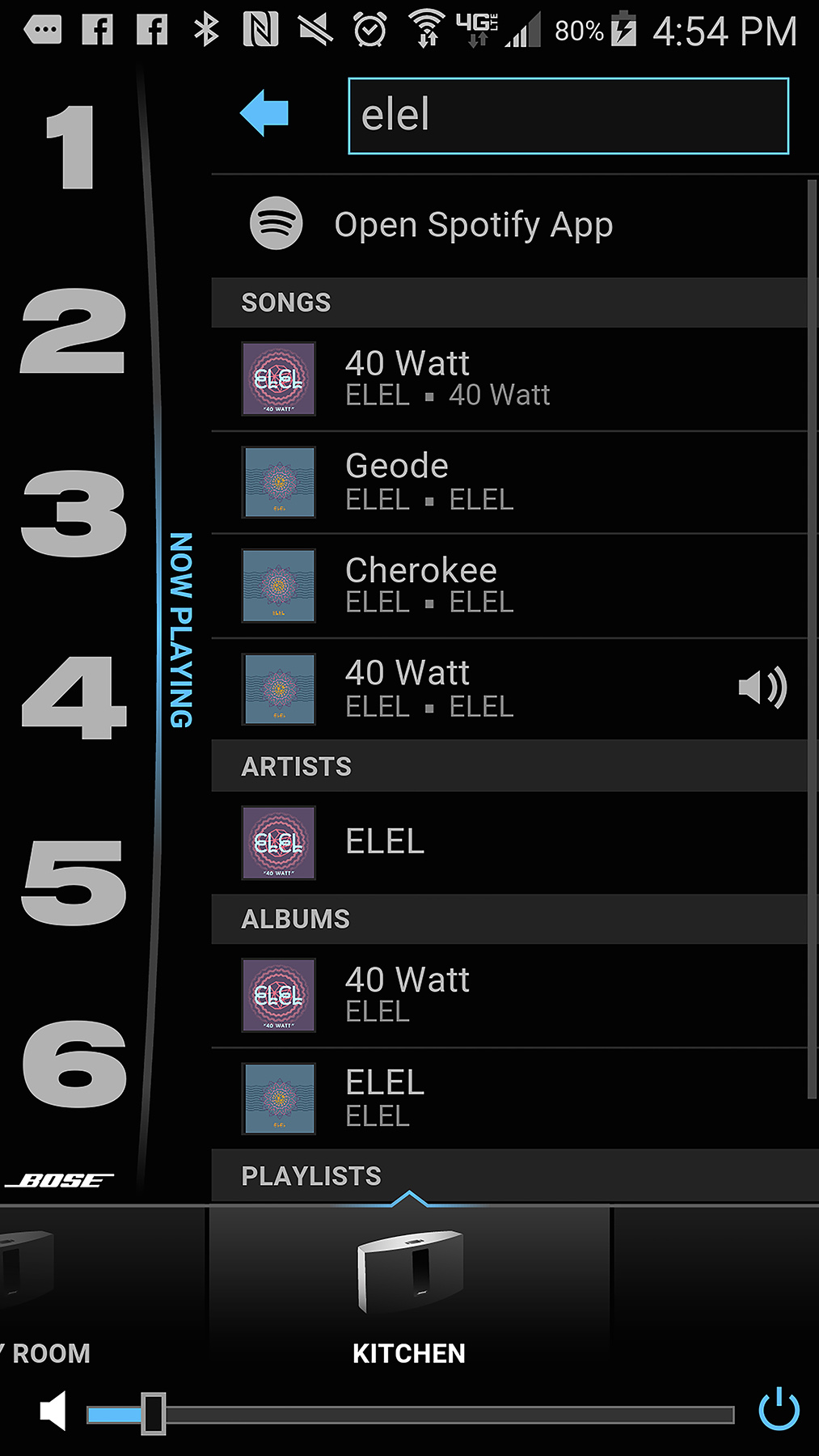
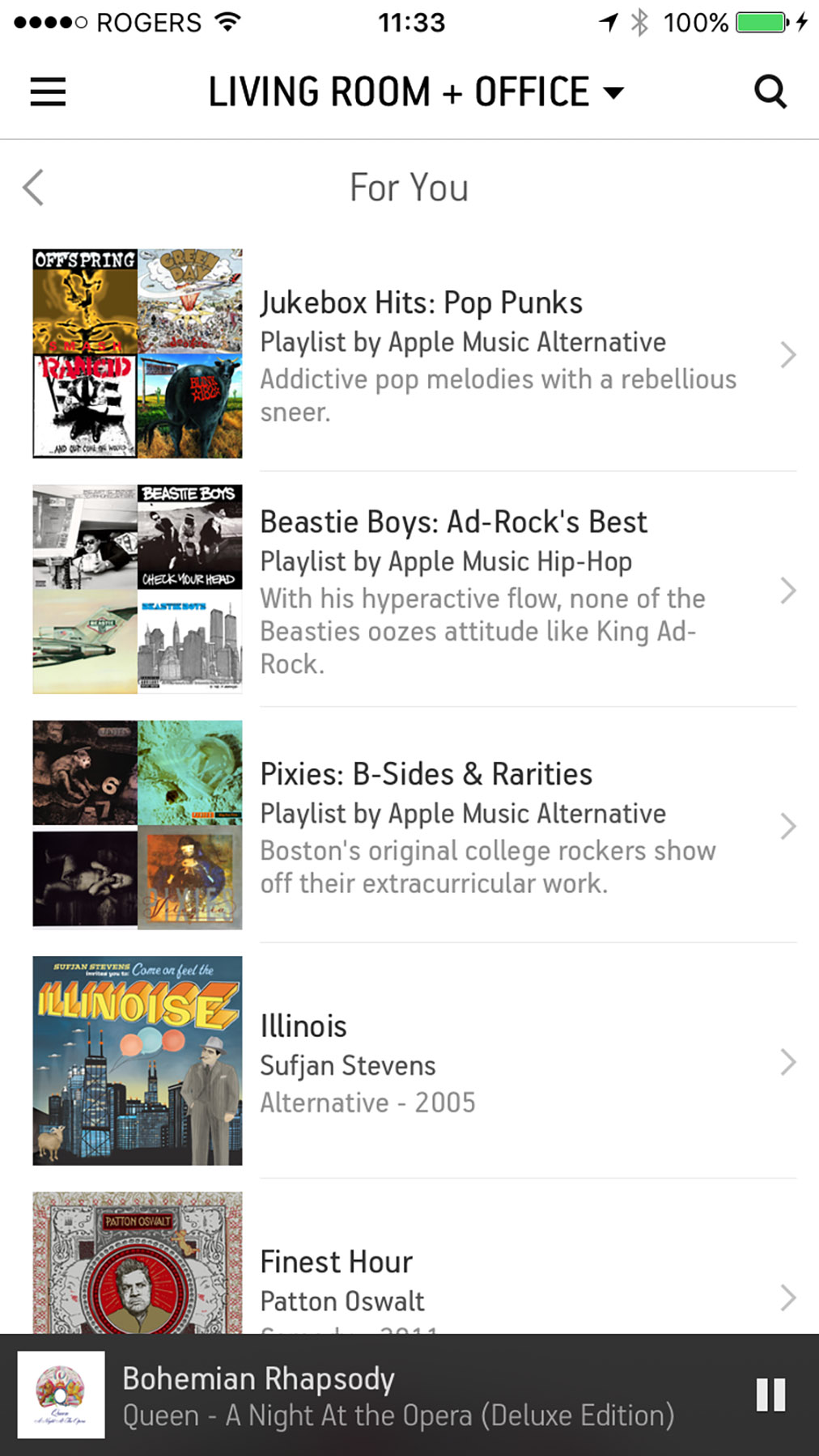
The Sonos Controller App and the Bose SoundTouch app have very similar features.
Both let you program and control speakers throughout your home to play music. You can choose to have the same music on multiple speakers, or different music on individual speakers.
With the Bose SoundTouch speakers, you have to use the app if you want to program internet radio stations to the preset buttons on the top of the speaker. When Bose first introduced their SoundTouch lineup, they had to be initially set up by plugging the speakers into a computer, configuring them, and then placing them in your home. Now set up can be completely done through the app.
The Sonos App will allow you to set up and manage new speakers as you expand your system. If you are using an iOS device, you can use Sonos Trueplay (which is built in to the iOS app) and it will use your device's microphone to calibrate your speakers for optimum performance in whatever room you set up your Sonos. Keep in mind, though, Trueplay is only available on iPhone and iPad.
With the exception of Trueplay, the Sonos and Bose app experience are pretty similar. One important difference between the apps is the integrated services each system supports.
Supported Services
This is where you'll find a major difference between Sonos and Bose.
Sonos supports significantly more streaming services than the Bose SoundTouch lineup of speakers. Both systems will play existing music on your computer or device one way or another, but the integrated experience between the Sonos Controller and supported music streaming services like Apple music is very slick.
It's important to know the free versions of services (like spotify, Google Play Music, etc.) will not work with the apps on either systems, so if you're planning on getting the best experience from your streaming services, you should be prepared to upgrade to the premium versions. A workaround for the Bose system is to stream via Bluetooth from the streaming app of your choice; however, this means you won't be logged in through the speaker's controller app, so you may only be able to stream on one speaker at a time.
If you're planning on managing your streaming music through paid services like Apple Music and Spotify, then the Sonos family of speakers offer the best support.
Which is right for you?
Both Sonos and Bose make superior audio products. The wireless speakers in the Sonos family and the Bose SoundTouch lineup will give you great performance and will be easy to build a whole-home audio system from.
The main difference comes in the app experience, and specifically, the way the apps integrate paid music streaming services. Sonos has a much larger offering of supported platforms to stream music through their app. Bose only has a handful currently, however, you can access internet radio stations right from the speaker after you've configured the speaker's preset buttons, which could be appealing to some users.
Sonos has an advantage through their supported streaming systems. In the key areas of audio quality, expansion capability, and ease of setup, both are on par. Even when you look at the prices, similar models between the two brands are priced almost identical. When making a final decision between Sonos and Bose your won't make a wrong choice.
○ Sonos buyers guide
○ Sonos for iPhone and ipad
○ Sonos news
○ Sonos discussion forum
○ Reviews: Home theater, Play:5
○ More: Sonos One; Play:1, Play:3, Play:5, Connect, Connect:Amp, Playbar, Sub
"Siri, write a really funny bio for me to use for Mobile Nations" "Okay, Drew, here's your really funny bio: How-to writer, fiddle player, retro gamer."

